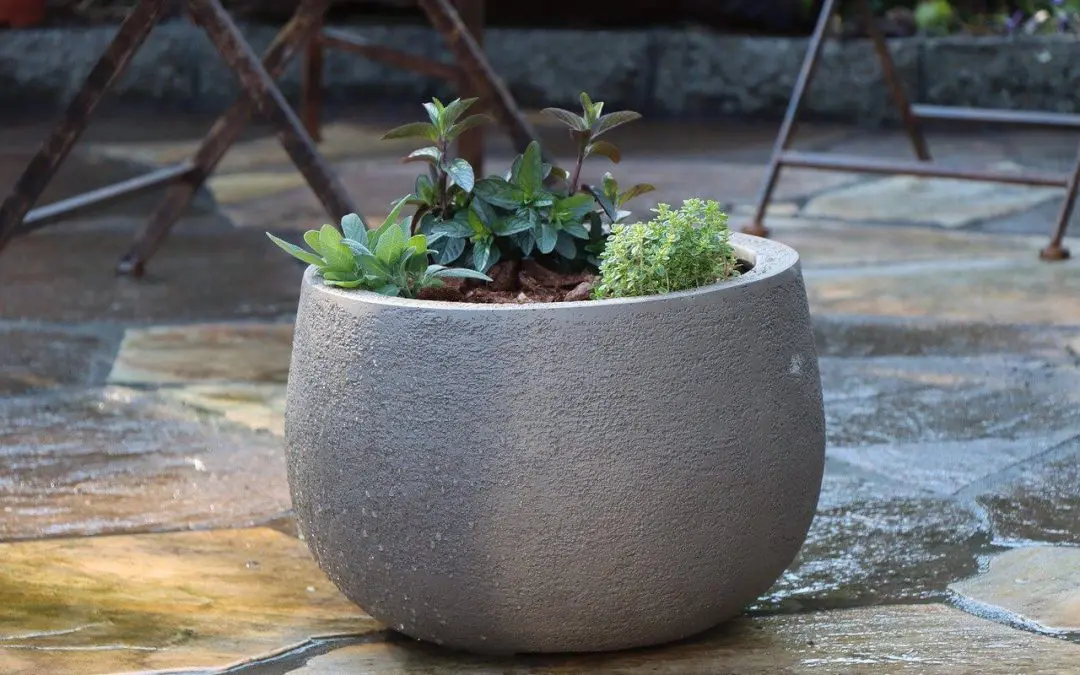A garden enhances your property’s curb appeal and adds greenery to your living spaces. However, not everyone has the space, time, or skills to maintain a full-sized garden. That’s where container gardening comes in. Container gardening is a versatile and low-maintenance way to grow plants in small spaces or on balconies, patios, or rooftops. Here are a few of the benefits of container gardening and tips for success.
3 Benefits of Container Gardening
Easy and Convenient
Containers and planters provide a great place to start gardening if you’re a beginner or don’t have much time, energy, or space for a traditional garden. You can plant a container garden almost anywhere, even indoors, and move it as necessary to catch the sunlight and protect it from wind, bad weather, and pests. You can also water, fertilize, and prune your plants more easily than in a garden bed, avoiding back pain, knee strain, and other physical challenges.
Versatile and Creative
Gardening in containers allows you to experiment with different plants, colors, textures, and arrangements. You can choose from a wide variety of plants that thrive in pots, including flowers, herbs, vegetables, fruits, succulents, or shrubs, and mix and match them to create a stunning display. Use a variety of containers, such as pots, baskets, boxes, or barrels, to personalize your garden.
Cost-Effective and Sustainable
Container gardening reduces waste when you use recycled or repurposed containers or materials. You can also grow your own herbs, vegetables, or fruits to enjoy fresh and healthy produce without relying on store-bought or packaged options. Container gardening also promotes biodiversity and pollination by attracting bees, butterflies, and other beneficial insects.
4 Tips for Successful Container Gardening
Choose the Right Containers
The containers should suit the type of plants you want to grow and the local climate. Planters should be large enough to accommodate the root system but not too heavy or bulky to move around. They also need drainage holes to prevent water from accumulating and causing root rot. Add a layer of gravel, sand, or broken pottery at the bottom of each container to improve drainage and aeration.
Use the Right Soil and Fertilizer
Container plants need well-draining and nutrient-rich soil. Choose a high-quality potting mix or make your own by combining equal parts of peat moss, vermiculite, and perlite or sand. Organic matter, such as compost, manure, or worm castings, improves soil structure and fertility.
Water and Prune Regularly When Container Gardening
Container plants need consistent watering to prevent drying out. Water them when the top inch of soil feels dry, and adjust the frequency or amount depending on the weather, humidity, and plant type. Mist or spray the leaves to increase humidity and prevent pests or diseases. Prune or deadhead them using clean and sharp scissors or shears to keep your plants in shape and promote new growth.
Protect from Pests and Diseases
Container plants are vulnerable to pests and diseases because they are confined in a small space. To prevent or treat these issues, use natural or chemical methods, depending on the severity and type of problem. Insecticidal soap, neem oil, or diatomaceous earth control aphids, mites, and caterpillars. Use fungicides, copper sulfate, or hydrogen peroxide to control powdery mildew, rust, and blight.
Container gardening is a fun, rewarding way to enjoy growing things without the hassles and expenses of a traditional garden. Create a beautiful and sustainable garden that reflects your personality and provides fresh and healthy produce, flowers, or herbs for your home.
Buyer’s Edge provides inspections to homebuyers and sellers in Western North Carolina. Contact us to schedule our services.

